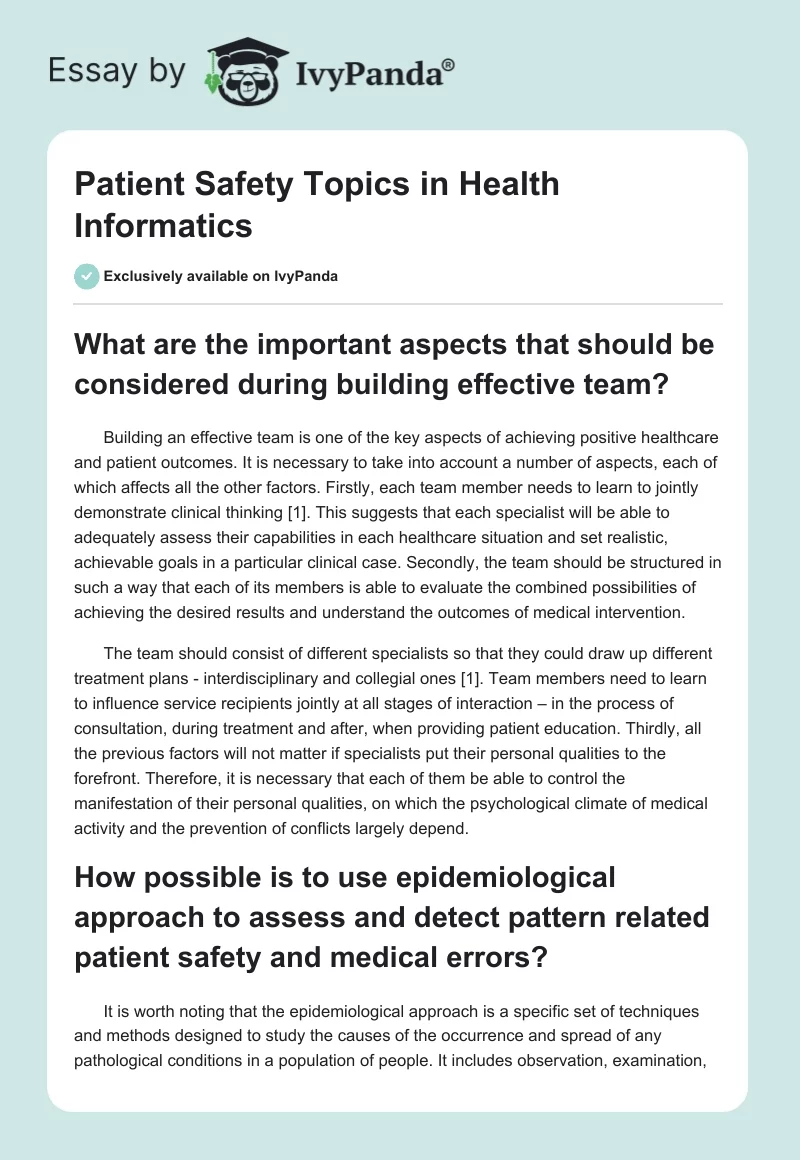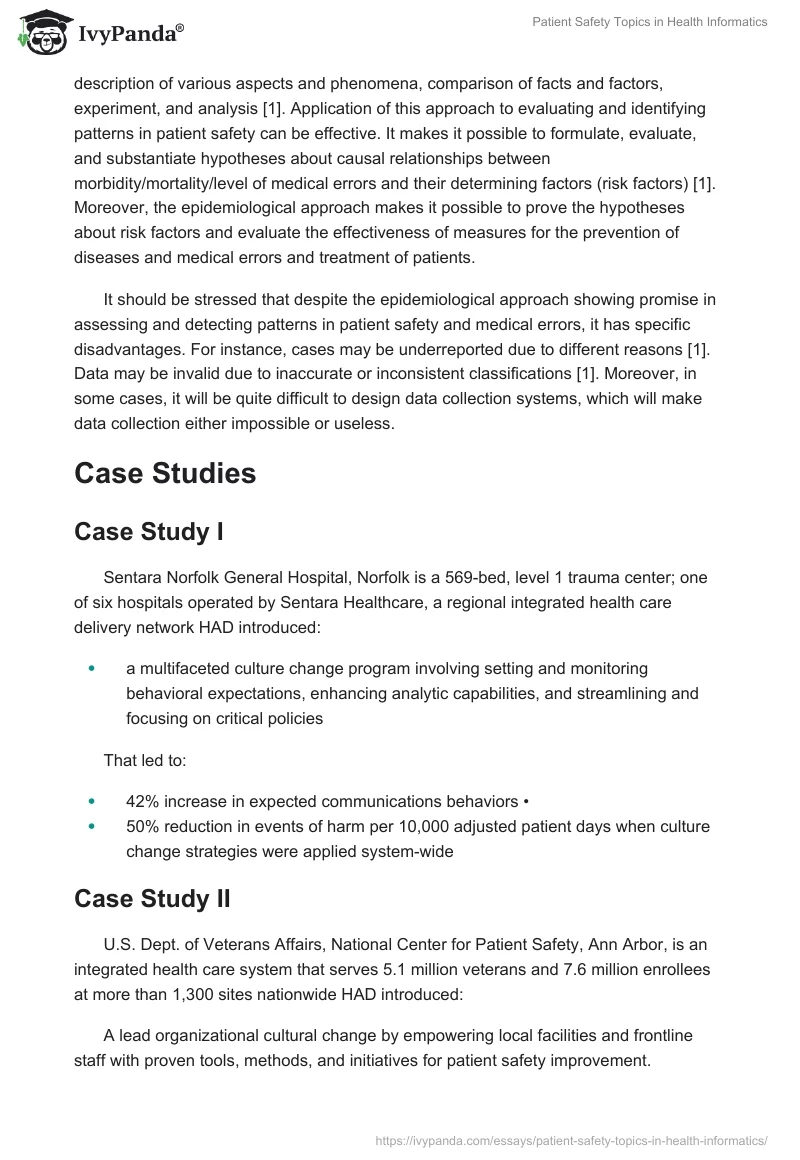What are the important aspects that should be considered during building effective team?
Building an effective team is one of the key aspects of achieving positive healthcare and patient outcomes. It is necessary to take into account a number of aspects, each of which affects all the other factors. Firstly, each team member needs to learn to jointly demonstrate clinical thinking. This suggests that each specialist will be able to adequately assess their capabilities in each healthcare situation and set realistic, achievable goals in a particular clinical case. Secondly, the team should be structured in such a way that each of its members is able to evaluate the combined possibilities of achieving the desired results and understand the outcomes of medical intervention.
The team should consist of different specialists so that they could draw up different treatment plans – interdisciplinary and collegial ones. Team members need to learn to influence service recipients jointly at all stages of interaction – in the process of consultation, during treatment and after, when providing patient education. Thirdly, all the previous factors will not matter if specialists put their personal qualities to the forefront. Therefore, it is necessary that each of them be able to control the manifestation of their personal qualities, on which the psychological climate of medical activity and the prevention of conflicts largely depend.
How possible is to use epidemiological approach to assess and detect pattern related patient safety and medical errors?
It is worth noting that the epidemiological approach is a specific set of techniques and methods designed to study the causes of the occurrence and spread of any pathological conditions in a population of people. It includes observation, examination, description of various aspects and phenomena, comparison of facts and factors, experiment, and analysis. Application of this approach to evaluating and identifying patterns in patient safety can be effective. It makes it possible to formulate, evaluate, and substantiate hypotheses about causal relationships between morbidity/mortality/level of medical errors and their determining factors (risk factors). Moreover, the epidemiological approach makes it possible to prove the hypotheses about risk factors and evaluate the effectiveness of measures for the prevention of diseases and medical errors and treatment of patients.
It should be stressed that despite the epidemiological approach showing promise in assessing and detecting patterns in patient safety and medical errors, it has specific disadvantages. For instance, cases may be underreported due to different reasons. Data may be invalid due to inaccurate or inconsistent classifications. Moreover, in some cases, it will be quite difficult to design data collection systems, which will make data collection either impossible or useless.
Case Studies
Case Study I
Sentara Norfolk General Hospital, Norfolk is a 569-bed, level 1 trauma center; one of six hospitals operated by Sentara Healthcare, a regional integrated health care delivery network HAD introduced:
- a multifaceted culture change program involving setting and monitoring behavioral expectations, enhancing analytic capabilities, and streamlining and focusing on critical policies
That led to:
- 42% increase in expected communications behaviors.
- 50% reduction in events of harm per 10,000 adjusted patient days when culture change strategies were applied system-wide.
Case Study II
U.S. Dept. of Veterans Affairs, National Center for Patient Safety, Ann Arbor, is an integrated health care system that serves 5.1 million veterans and 7.6 million enrollees at more than 1,300 sites nationwide HAD introduced:
A lead organizational cultural change by empowering local facilities and frontline staff with proven tools, methods, and initiatives for patient safety improvement.
That led to:
- 30-fold increase in internal safety incident reporting.
- 100% increase in perceived preventability of safety events studied by root cause analysis teams.
Learning from the above two case studies, how would you propose a culture change that enhance healthcare process safety in a mid-size healthcare organization?
The delivered content during the classes about the culture and patient safety should be enough
In a medium-sized organization, it will not be so easy to change the culture to increase the safety of the healthcare process. However, a series of actions can help to significantly improve the situation. I would optimize resource management by reducing inefficient financial costs as a result of the rational use of medicines. Also, I would take measures to reduce the number of duplicate clinical tests. As an additional motivational aspect, it is necessary to reduce the number of penalties. Moreover, I would organize training courses and continuing education courses on patient safety.
As a general measure, staff would be trained to involve patients in the process of care to make the specialist and the client equal partners. Reducing penalties would allow the formation of a patient safety culture in medical organizations in a spirit of openness and transparency. Transparency of action would also ensure timely reporting of detected treatment errors, which will enable learning lessons for increased patient safety. Investing in patient safety leads to cost savings as well as building trust between patients and the healthcare system. In general, a culture of change should be aimed at making patient safety a priority for the medical organization.
Given the size of the organization, additional control measures need to be introduced. It is possible to determine an authorized person who will generate a semester report containing information about the condition and quality and safety of medical activities in the organization. Based on the data from this report, the head of the institution and managers will decide on the introduction of additional or corrective measures.
Medication management
Medication management is a crucial area for patient safety efforts. Name the important information technology solutions available for the Closed Loop Medication Management (CLMM) System? Select one solution and identify its strengths, limitations and how to overcome the mentioned limitations?
There are various information technology solutions available for the Closed Loop Medication Management (CLMM) system. For instance, they are Computerized Provider Order Entry (CPOE), Clinical Decision Support System (CDSS), Bar Code Medication Administration (BCMA), Automated Dispensing Cabinet (ADC), and many other solutions. CPOE is a very useful system, which provides specialists with an opportunity to input, change, and cancel orders in various healthcare settings. Its main advantages are linked to the fact that it helps avert errors through standardized and full orders, and it also reinforces compliance with the workflow guidelines.
Nevertheless, the system has specific limitations that need to be taken into consideration. The implementation of the system directly affects the communication between doctors (including communications for educational purposes). The transition from oral communication to computerized one has changed the type, quantity, and quality of information transmitted. On the one hand, CPOE provides a clear transfer of information about the prescribed treatment between members of the medical team. On the other hand, when using this system, the opportunity for cooperation gets lost. In order to overcome the aforementioned limitations, management needs to ensure the efficient exchange of information through effective collaboration, where the system will have an auxiliary function.
Reference
Youngberg BJ, editor. Patient safety handbook. 2nd ed. Burlington: Jones & Bartlett Publishers; 2013.


